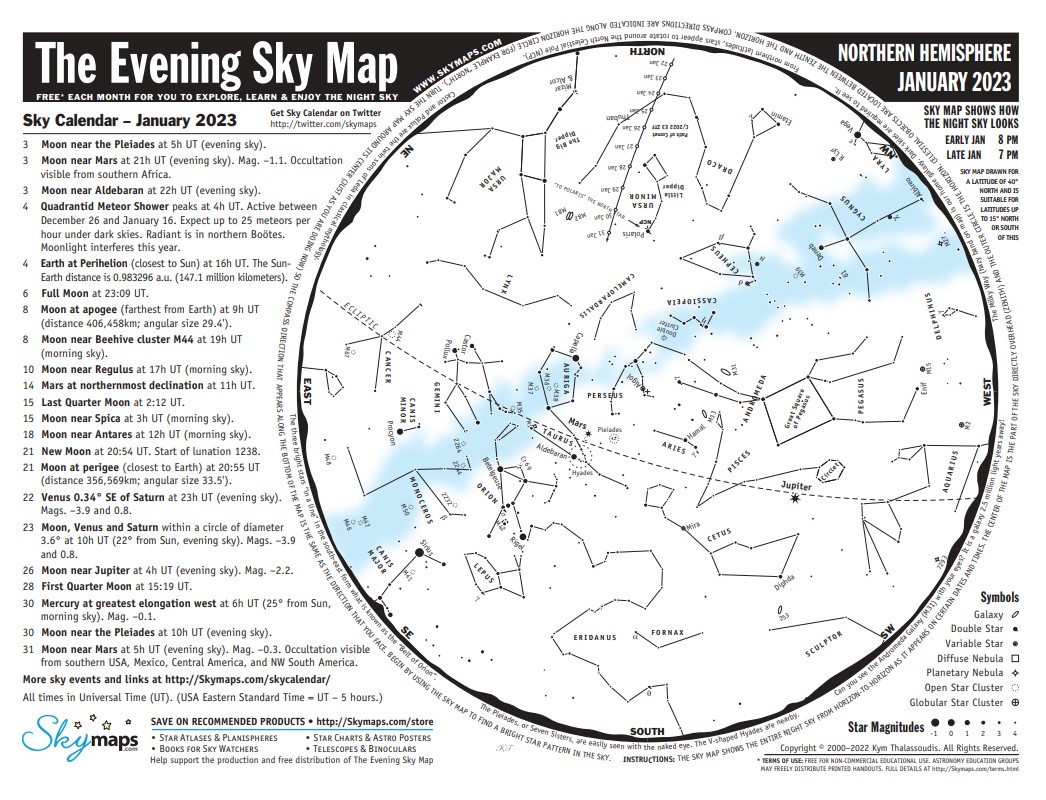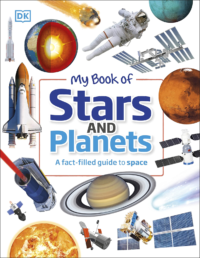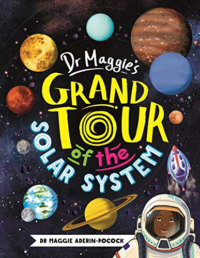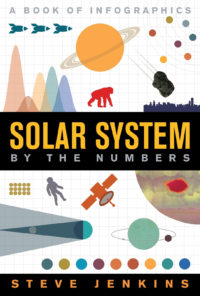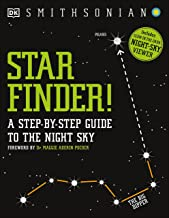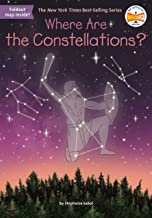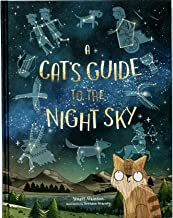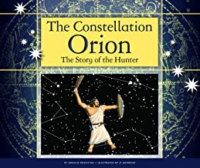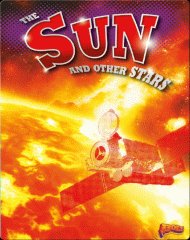
Welcome to The Far Out Space Blog! Ahoy, astronomers! Josh Urban here – host of the monthly CCPL Astronomy Club.
Previously on the CCPL Astronomy Club – In case you missed the December meeting, here’s a quick recap: we learned how to find Orion (see below!), heard the legend of the Giant and Artemis, saw that a star’s color is related to it’s temperature (bluer = hotter), and figured out how to see six planets without a telescope. Read on for more details! We hope you can join us at the next meeting on Thursday, January 26th, 2023, at 6 pm.
Sky Happenings and How to See Them
- There’s always something “up!” in the sky, and not just annoying puns! January’s Full Wolf Moon was on the 6th, and wanes towards the New Moon on the 21st.
- The planets put on a fine show as the new year kicks off. They’re all in the evening sky! Look for Mercury and Venus in the evening twilight just above the sunset. Saturn sinks into the west, and appears to say hello to Venus on January 22nd. As the planets orbit the Sun, sometimes they look like they’re next to each other, but it’s an optical illusion. They’re on the same line of sight, but Saturn is millions of miles further away than Venus. This is called a conjunction, and it will be nifty. Watch them as they move ever closer throughout the month.
- Jupiter is king of the evening sky, shining brightly in the south at nightfall, and Mars is climbing higher in the southeast. Look for his steady red light in the constellation Taurus.
- And what about Planet #6? Hint: Take a glance at what you’re standing on.
If you want a challenge, Uranus can be spotted with binoculars, but Neptune is better suited for a telescope. Here’s a groovy website if you’re curious.
I See Orion in the Sky
An easy (ish) way to find Orion is to go outside, look to the southeast, and find Sirius, the Dog Star. It’s the brightest star in the sky, but don’t confuse it with Jupiter or Mars. Remember, a star twinkles, and a planet (usually) does not. Sirius is a beautiful blue-white color, and often twinkles merrily, its light getting “jumbled” by turbulence in the Earth’s atmosphere. Look upwards and to the right, and you’ll notice the famous “belt of Orion”, three equally bright stars in a line. Can you make out the whole shape of the mighty hunter?
Here’s a map of the neighborhood:
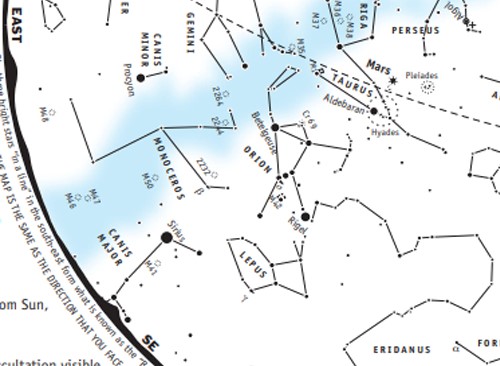
And a chart of Orion himself:

Note Rigel, the blue-white star that marks his foot. It’s about 864 light years away, and 120,000 times brighter than our Sun (if they were next to each other.) It’s also hotter than the Sun. Next move your eye to Orion’s shoulder, to see the reddish star called Betelgeuse. It’s 643 light years away, and huge – 764 times bigger than the Sun! It’s red, which means it’s cooler. Check out this nifty chart of star sizes and temperatures.
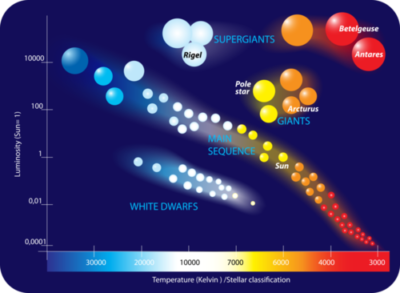
Shoutouts and Questions
“N” asked if we were in danger of being flattened by a GIANT FLAMING SPACE ROCK! Well, ol’ Uncle Josh sure missed that opportunity for calm reassurance. In retrospect, statistics and a gleeful recounting of the formation of the Chesapeake Bay 35 million years ago is not comforting. Yikes. Apologies, N. Rest easy, I’d bet all the telescopes in my collection, plus my guitars, and even a fresh Ledo”s pizza (with olives) that we’ll be A-OK. (And I never bet if I’m not sure.) That was a nice picture of the end of the world that you drew, though.
Until Next Time
Enjoy those sparkly winter skies, folks! It sure is a fine time of year for stargazing. If you have binoculars, try sweeping through Orion. Can you spy a fuzzy patch in the sword belt? It’s the Orion Nebula, a “star factory” the Mayans called the “cosmic fire of creation.” Keep collecting stories, keep looking up, and keep asking questions!
Clear skies,
– Josh
CCPL Astronomy Club is held on the last Thursday of every month, September through May.
Register today to join us next time on January 26th at 6pm.
In the meantime check out some of these awesome books you can get from the library as well as some other great resources to learn more about this month’s topics!
My Book of Stars and Planets by Dr. Parshati Patel
Join us on an adventure across the universe, as we rocket to the stars, marvel at mysterious planets and discover galaxies far far away.
Three, two, one, blast off! From icy worlds and hot, fiery giants to the biggest telescopes and latest spacecraft, this book about space covers more than 40 profiles of the planets, stars and celestial objects.
Dr. Maggie’s Grand Tour of the Solar System by Dr. Maggie Aderin-Pocock
Visit planets, moons, asteroids and satellites, and travel to places where no human has been before. Along the way, you can discover how we could live on Mars, learn about the hunt for a mysterious super-Earth, have a snowball fight on Mercury, climb the largest volcano in the Solar System and much, much more.
Solar System by the Numbers: A Book of Infographics by Steve Jenkins
Through infographics and illustrations readers will learn about the unfathomably huge and fascinating topic of solar systems. Explore the galaxy that surrounds our planet through astounding numbers, facts, and figures.
Star Finder!: A Step-by-Step Guide to the Night Sky
A novel approach to stargazing, this stunning space book features step-by-step guides to identifying the key constellations across the northern hemisphere.What do you see when you look up into the sky? Have you ever wondered what the stars mean? Or how they are connected? Or what each constellation is called? If so, then this may be the book for you!
Where are the Constellations? by Stephanie Sabol
Ancient people from many different cultures all looked up and imagined pictures in the sky by “drawing” a line from one star to another, like a connect-the-dots puzzle. These star pictures–constellations–represented myths and legends from the various cultures that still fascinate us today. Author Stephanie Sabol relates many of the most popular constellation stories and explains what stars actually are: how they formed, why they die, and how they’re grouped into constellation families.
A Cat’s Guide to the Night Sky by Stuart Atkinson
If you look up at the sky on a dark night, what do you see? There’s a whole universe staring back at you. In the company of Felicity the cat, discover the phases of the moon, the constellations, and how to spot the Northern Lights and the Milky Way.
The Constellation Orion: The Story of the Hunter by Arnold Ringstad
Retells the story of Orion and variations of the myth, discusses the astronomical features of the constellation Orion, and describes the history of the constellation and its myths in world culture.
Greek Myths: Meet the Heroes, Gods, and Monsters of Ancient Greece by Jean Menzies
This collection contains more than 30 enthralling new retellings of favorite myths as well as some you might not have heard before! Including Theseus and the Minotaur, The Twelve Labours of Herakles, and the escapades of Jason and the Argonauts, each myth is told in engaging modern language, which is easy for children to understand yet still retains the humor and intrigue of the original tales.
Artemis the Hero by Joan Holub & Suzanne Williams
While protecting egotistical transfer student Orion, Artemis makes a mistake that later provides her with the chance that she has both hoped for and dreaded, to prove her courage to herself and others at Mount Olympus Academy.
The Sun and Other Stars by Gail Terp
Discover the sun and other stars through engaging text, vibrant photography, and powerful infographics.

